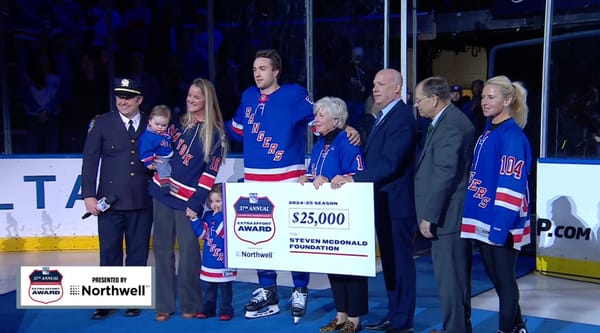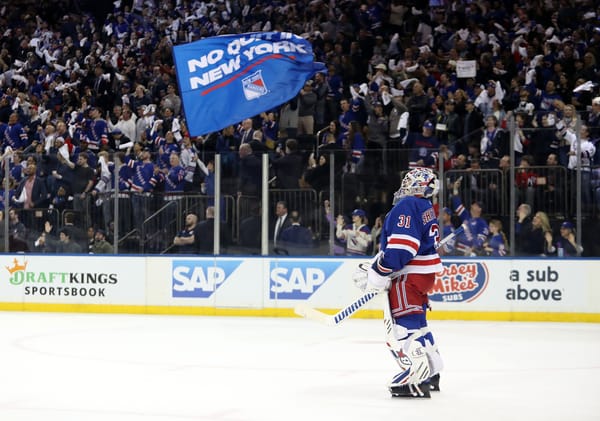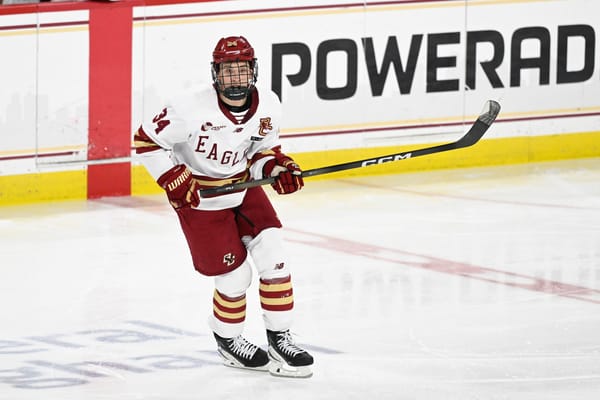Could Fans Be in the Stands at Madison Square Garden Soon?
With limited fan attendance becoming a reality in the NHL again, could that be in the New York Rangers near future?
On January 7th, the NHL released a set of Arena Restart Protocols, giving fans a glimmer of hope that they could return to the rinks of their teams sometime in the near future. The Dallas Stars were one of the teams who announced plans of having fans in their arena this season, aiming to have north of 5,000 fans at home games. Unfortunately, due to 17 players testing positive prior to opening night, they have already had their first four games postponed which has caused twelve games to be rescheduled to accommodate the team. Dallas has since opened the season, with fans in the stands.
Along with the Stars, other teams are being approved by the International WELL Building Institutes (IWBI) to reopen arenas to fans with limited capacity. So, what could reopening Madison Square Garden look like for the Blueshirts fans?
Detailed information on all @NHL COVID-19 arena restart protocols and requirements for the 2020-21 season can be found here: https://t.co/IBZV3QiPsf pic.twitter.com/SGsElrcilu
— NHL Public Relations (@PR_NHL) January 7, 2021
The Florida Panthers’ BB&T Center was the first hockey arena to achieve the WELL Health-Safety Rating for Faculty Operations and Management from the IWBI. They received the certification based off of five core achievement areas which focused on “operational policies, cleaning and maintenance protocols, design strategies, stakeholder engagement, and emergency preparedness in the wake of COVID-19, now and into the future.” (NHL.com) These five core achievement areas consist of:
Air & Water Quality Management - with a focus on enhanced air treatment, filtration, and ventilation including a comprehensive system-wide assessment of ultraviolet germicidal irradiation (UVGI) equipment, filters, and fresh air supply mechanisms; rigorous maintenance and inspection protocols; and a strategic moisture management plan to limit potential airborne pathogens. Cleaning & Sanitation Procedures - including strategies to limit high-touch surface contact, rigorous cleaning procedures, enhanced employee training and handwashing protocols, and detailed documentation procedures. Emergency Preparedness Programs - risk assessment, resources, education, enhanced training, strategic emergency response protocols and procedures for re-entry focused on heightened sanitization procedures, employee training and communications, and continuous health and safety protocol evaluations. Health Service Resources - robust employee health & safety plans including access to essential health services, screenings, and assessments, employee vaccination programs and annual season flu prevention campaigns, and access to mental health services. Stakeholder Engagement & Communication - a multi-modal program to promote health literacy and emergency preparedness through ongoing communications, health-centered educational materials, and stringent food-service inspection protocols. (NHL.com)
Upon this achievement, they were approved to have limited capacity for all 28 home games during the regular season. Visual aids called “Red Reminders” will be posted from the parking lot to and around the arena to remind fans of the health and safety guidelines they must follow. Some of these safety measures are pre-paid parking, mask requirement (except while eating and drinking), socially distanced seating, mobile ticketing, cashless transactions, a no-bag policy, sanitizer stations, along with additional measures near the food concessions.
At the Gila River Arena, the same types of safety measures were put in place for Arizona Coyotes fans. Although approved for 25% max capacity for all their home games in January, which would allow for 3,450 fans, attendance was capped at 2,274 fans for the Coyotes first two games. Bridgestone Arena also received approval for 15% limited capacity for all of the Nashville Predators’ January home games. The arena’s hockey game capacity is 17,500 people, meaning around 2,600 fans would have been allowed at 15%.
Dallas Stars had 4,214 fans inside American Airlines Center for tonight's home opener against the Predators. Capacity set at 30% or ~ 5,000 fans.
— Mark J. Burns (@markjburns88) January 23, 2021
➖Coyotes (25% cap, 3,450 fans) had 2,274 fans at home opener
➖Panthers (25% cap, ~ 5,000 fans) had 4,147 fans at home opener
Up in Ottawa, the Senators owner Eugene Menlyk proposed a nonsensical plan to get 6,000 fans in the arena for home games, only for the Ontario government to declare a second provincial emergency due to COVID-19 a few hours later.
Switching perspective to Madison Square Garden, there are upwards of 18,000 seats for hockey between the upper and lower bowls, the bridge, and the suites. If the IWBI gave Madison Square Garden the same approval of 15% limited capacity like the Predators, and we base the number off of 18,000 as the maximum capacity, that would allow 2,700 Blueshirt fans back on Broadway. If we again use 18,000 as the maximum capacity but change the limited capacity approval to 25% like the Coyotes, that would allow another 1,800 fans in at 4,500 fans. However, it seems that limited capacity could pose issues for ticket holders and those looking to buy single-game tickets.
The Tampa Bay Lightning’s Amalie Arena will be allowed to have about 4,000 fans in attendance at their home games this season. When ticket sales began, they started with selling season tickets plans to existing season ticket holders for plans of seven or fourteen games. The allotted number of tickets were sold out in less than a day, with plans for single-game tickets and further game plans tickets being available in the days that followed to season ticket holders and email subscribers. In doing so, according to TampaBay.com, “only about 45-50 percent of season plan holders will able to purchase some type of seating.” Any of the remaining tickets that were not sold by the end of the week, would be available to purchase for the general public.
It would be fair to assume that Madison Square Garden would follow in the same steps by allowing season ticket holders to get first crack at any tickets when fans are allowed at home games again. But considering the possibility of a 15% limited capacity of only about 2,700 fans, that means even fewer season ticket holders would be able to purchase tickets. In the event of that, those season ticket holders who were unable to purchase tickets could receive a credit towards their balance for their plans, which is what Amalie Arena has chosen to do. Another thought could be capping how many games season ticket holders can buy tickets to, in an effort to allow more ticket holders the opportunity to attend a live game (while balancing the remaining credits as suggested above). But, what could throw a wrench in the plans, is the issue of games being postponed and rescheduled due to positive COVID-19 test.
On December 30th, the Buffalo Bills were granted approval to host 6,772 fans for the Wild Card game by the State of New York. This was the first major league team to have fans in the stands in New York since the early days of the pandemic. The Bills’ maximum capacity at their stadium is 72,000, making the permitted number of fans just a little more than 9% of the stadium’s capacity. Only 6,200 tickets were available for purchase and fans had to provide a negative COVID-19 test which was administered at the stadium two to three days prior.
Fans being welcomed back into the Bills’ stadium could mean that other teams, like the Rangers, are a step closer to having fans in the building. The key difference, though, may be that the Bills stadium is an open-air arena while Madison Square Garden obviously is enclosed. It goes without saying that there would need to be approval signed off on by New York City, and it would need to be done in a way that doesn’t run the risk of contributing to a rapid rise in COVID-19 cases. But, there’s also the potential for more testing opportunities if the supplies are available, if fans are required to be tested before entering as they were prior to the Wild Card game.
While fan attendance would be a great way to bring back a sense of normalcy, it has to be done carefully and wisely. The number of cases throughout New York City zip codes are going down a bit, so it is possible that if the numbers continue to decline that a plan could become more realistic. But coming back too early could create another uptick, and put New York even further back in stopping the spread.
Although playing 56 division only games controls the amount of travel, distance teams are traveling, and the use of taxi squads give teams access to more players in case of an outbreak, there is still the inherent risk of exposure in any public space. But there are protocols in place in an effort to ensure the safest possible experience for the players and staff, and slowly, the fans as well.




